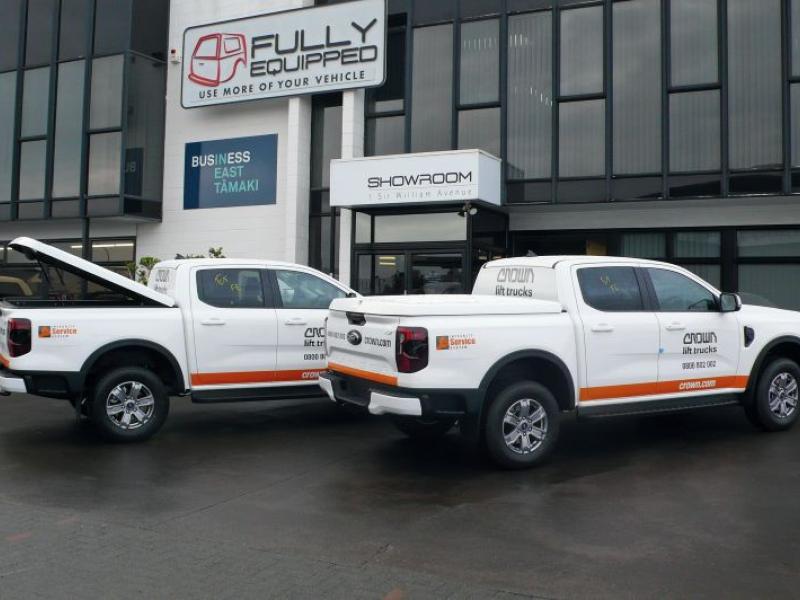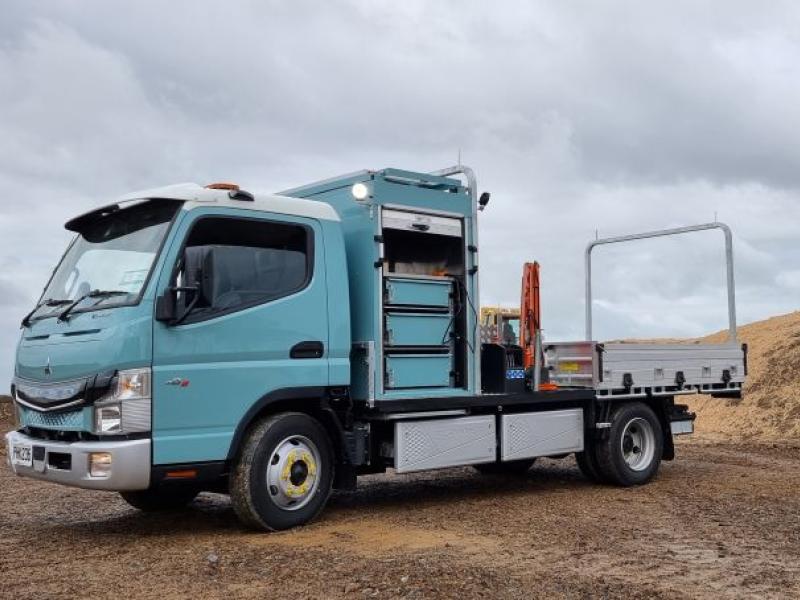|
Toyota has given the Hilux a facelift for 2012 – but is it enough to maintain market leadership? Damien O’Carroll reports.
The Toyota Hilux has reigned supreme as New Zealand’s top selling ute for close to 30 years now, but recently its dominance has come under increasing threat from the likes of the Nissan Navara, Mitsubishi Triton, Ford Ranger and, most recently, the Volkswagen Amarok.
Things look to get even harder for the Hilux next year when an all-new Ranger and Mazda BT-50 hit the streets, along with an equally new Holden Colorado, the more powerful Nissan Navara 550, a new SsangYong and a number of new and upgraded Chinese utes.
One of the biggest advantages the likes of the Amarok and Triton had over the Hilux was in terms of safety - more specifically curtain airbags and stability control. And that is an advantage that is set to continue with the release of the latest Hilux.
Toyota engineers have only managed to develop stability control for Hiluxes riding on the 17 inch wheels, meaning all the others miss out. But it does mean that all 4WD double cab models get stability control.
This is a situation where Toyota NZ is largely restrained by overseas demand and the capabilities of Toyota’s Thai manufacturing facility. Toyota’s Steve Prangnell says that the NZ operation will take VSC stability control on other versions of the Hilux as it becomes available.
This midlife makeover - the second since the current seventh generation arrived on the market in 2005 - is critical for the top-selling ute, and while the looks have been updated inside and out, what lies underneath remains essentially the same.
Powertrains are unchanged, with the 116kW 2.7-litre four-cylinder petrol and 126kW 3-litre four-cylinder turbo-diesel remaining the engines of choice. The petrol engine is only available in a choice of either single or double cab 2WD options, and only with the 5-speed manual transmission. The only other transmission option is the tired old four-speed automatic that has done service for what seems like an eternity now.
Body styles also remain constant, with single cab in cab-chassis and wellside styles, extra cab and double cab all being retained, but Toyota has expanded the range - now up to 13 models - by a single model by adding an extra cab 4WD wellside version.
Looks-wise the Hilux has gained the latest Toyota family look with a new face intended to make it look more “passenger car-like”. Steve Prangnell says the the new Hilux front end has been redesigned on a “trapezoidal theme” with a wider look, while the lines flowing from the bonnet to the bottom edge of the bumper have been emphasised.
He says the inverted trapezoid radiator grille and lower grille “create an impression of the toughness associated with a pickup, while simultaneously conveying a modern look.”
New headlights complete the Hilux’s revamped face and the overall effect is reminiscent not only of the Land Cruiser 200 series, but also of Toyota’s upscale Lexus brand.
Another new feature is the addition of new mirrors that incorporate the turn signal lamps on top-spec SR5 models.
Along with new alloy wheels designs for SR5 models, the base 4WD double cab adopts new 17 inch steel wheels - up from the previous 15 inch - to allow the adoption of VSC on all 4WD double cabs. And you can’t help but feel Toyota NZ has done very well to get this.
New taillights complete the facelift, while the high-mount stop light lens cover has been changed to the clear type from the previous model’s red lens.
Overall, the facelift of the Hilux streamlines the popular ute, bringing a more purposeful look, while also simplifying the slightly messy and complex lines of the previous model’s face.
The Hilux also gains a revamped look on the inside as well. The instrument panel of the current model has been changed to a horizontal-themed design that adds a more modern appearance.
The majority of the rest of the interior also gains minor tweaks, such as the shape of the dials on the heater control panel, a new steering wheel design, and redesigned dials, while air conditioning has been added to 2WD single cab models, making air conditioning now standard across the range. A new locally-installed stereo is also standard across the range, with the SR5 gaining a more upmarket version with a 6.1 inch TFT touch screen.
|
Although all new 2WD and 4WD Hilux models get the latest exterior revamp, Toyota has focused the majority of the price action on the 4WD vehicles. These outsell their rear-drive counterparts anyway, with latest figures showing that 62 percent of global Hilux sales are of the double cab - and that percentage is no doubt far higher in New Zealand.
Toyota NZ has “repositioned” the pricing of the 4WD Hilux, slashing prices across the all-paw model range.
In two-wheel-drive models the price stays the same for the extra cab, increases $200 for the double cab petrol, $300 for the diesel double cab and $1,000 for both cab chassis models although increases in standard spec more than offset the increases.
The 4WD cab-chassis drops by $2,600 and there is no change to the two existing extra cab model, while the newly-added base grade extra cab ute comes in at $53,990.
Double cabs also get a price drop, ranging from a $1,000 price reduction for the top line SR5 models to an impressive $2,500 drop for the double cab diesel manual. The standard double cab auto drops $700.
Out on the road - and off it - the Hilux feels pretty much as you would expect it to, given that this is literally a facelift with virtually no mechanical changes, in other words, the same as before.
Still remarkably capable off-road and slightly ordinary on it, the facelifted Hilux is all about adding value, modernising the looks and maintaining its impressive market share.
Despite the onslaught of newer, more technologically advanced opposition in the next year, Toyota really has no choice but approach a “business as usual” approach to the Hilux until an all-new model appears in 2013.
Overall the package looks great and offers improved value-for-money, but still lags behind in a technical sense. But regardless, I certainly wouldn’t put money on Hilux losing the market lead any time soon.
|






